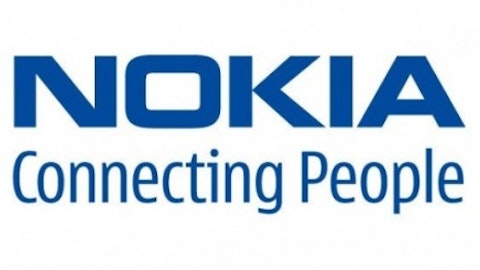Netflix, Inc. (NASDAQ:NFLX) stands as one of the major forces in the digital entertainment landscape. The company provides streaming video services in addition to shipping physical media to its subscribers.
Projected development
On July 22, Netflix, Inc. (NASDAQ:NFLX) released its second quarter report, showing increased subscription numbers and evidence of yearly growth. Still, news that the Netflix-produced fourth season of Arrested Development failed to attract the anticipated number of new subscribers proved worrying to investors. The company had anticipated adding 880,000 new subscribers on the backs of the returning Bluths, but managed only 630,000, and Wall Street reacted accordingly.
The stock has since rebounded somewhat, but the fundamental issue remains. Netflix, Inc. (NASDAQ:NFLX) has not demonstrated that its original content model will attract the growth it has projected. As such, it is my position that Netflix stock is still overvalued at a price of around $263.

Given that much of Netflix, Inc. (NASDAQ:NFLX)’s digital film lineup consists of disposable, low-budget material, there is a need for standout series and films that distinguish and define the service. The return ofArrested Development, now that a little time has passed, seems to exist in a place of mild commercial and critical success. As shown by Netflix’s overblown second quarter new subscriber estimate and a 71% Critical score for Arrested Development Season Four on Metacritic, there is some reason for disappointment.
If the excellently timed revival of Arrested Development did not spur the growth Netflix, Inc. (NASDAQ:NFLX) anticipated, what new property will? A belief that Netflix has the potential to hit between 50 and 70 million subscribers by 2020 has fueled a rising stock price, but there is good reason to believe that such projections and Netflix’s current price are unrealistic.
According to analysts from Bernstein Research, hitting 50 million US subscribers would be tapping 90% of the addressable market. With the draw of Netflix, Inc. (NASDAQ:NFLX)’s original programming still in question and subscriber growth slowing, I believe the present price represents too rosy a picture.
Although the stock’s P/E ratio is below the 700 figure that it was hovering around in April, it’s still very high at approximately 325 as of this writing. As the company continues to invest in infrastructure and expanding its subscriber base, it makes sense for Netflix, Inc. (NASDAQ:NFLX) to have a high P/E figure at this stage in its life.
The company has seen a new wave of investor interest, but Wall Street projections that earnings will increase 413.8% this year seem overly optimistic given that Netflix, Inc. (NASDAQ:NFLX) lags behind the industry average for revenue growth and the price of securing digital content will only continue to rise. The apparent decrease when comparing return on equity figures from the most recent quarter to the corresponding quarter from last year should also be cause for concern.
Other channels
While Outerwall Inc (NASDAQ:OUTR)’s Redbox faces the inevitable decline of the DVD market, it could be around longer than many are anticipating. Still, it does not pose the same threat to Netflix, Inc. (NASDAQ:NFLX) that it once appeared to. The stock remains a popular short with investors.
The company, formerly known as Coinstar, saw a rise in net quarterly income from $36.9 million to $46.9 million, but did not live up to Wall Street expectations. Even so, Redbox is working on expanding its online streaming platform and has clearly looked to Netflix, Inc. (NASDAQ:NFLX) for inspiration. Outerwall Inc (NASDAQ:OUTR)’s Redbox platform offers one-month free trials and could find a degree of success in aping Netflix’s model.
With Redbox accounting for 87% of Outerwall Inc (NASDAQ:OUTR)’s 2012 revenue, the company has to maneuver the physical-to-service transition that Blockbuster found so difficult. Still, Outerwall clearly believes that the contraction of the physical rental market isn’t coming as soon as many analysts have predicted.
Redbox now controls over 50% of the physical rental market, in part because Netflix, Inc. (NASDAQ:NFLX) has scaled back its DVD and Blu-Ray business, but also as a result of the installation of more kiosks. Despite a 13% increase in kiosks, the company saw a rise in sales of only 4% over the last quarter.
Outerwall Inc (NASDAQ:OUTR) stands to benefit from a recent District Court ruling that called for a reduction of debit card transaction fees. If rates are reduced, the company will see a substantial windfall.
Amazon.com, Inc. (NASDAQ:AMZN) Prime Instant Video represents a much more serious threat to Netflix, Inc. (NASDAQ:NFLX)’s business. Amazon recently announced that its Prime Instant Video library had surpassed 40,000 titles. It remains to be seen whether the company will reshape the interface for its service and make a more aggressive play for Netflix’s market, or if the company is content to sell Prime Instant as an added perk that comes with free two-day shipping. If Amazon were to give Prime Instant the slick veneer and ease of interface that Netflix offers, it could carve a much larger portion of the streaming market.
That said, you won’t find many of Netflix, Inc. (NASDAQ:NFLX)’s most threatening competitors on the stock index. The ease of piracy and the propagation of free streaming sites stand to diminish many of the gains that Netflix would like to make with its forays into original content.
Arrested Development was pirated over 175,000 times in the 48 hours following its release, even with Netflix, Inc. (NASDAQ:NFLX)’s decidedly low barrier to entry. While this number pales in comparison to the piracy figures for Game of Thrones, it represents a very real problem for Netflix. The company will see increased competition in the streaming video space and risks bleeding subscribers if it cannot produce breakthrough content. These factors in conjunction with the looming possibility of another Qwikster-style mismanagement lead me to believe that the company is presently overvalued.
Keith Noonan has no position in any stocks mentioned. The Motley Fool recommends Amazon.com and Netflix. The Motley Fool owns shares of Amazon.com and Netflix.
The article Where Will the Netflix Rollercoaster Go Next? originally appeared on Fool.com and is written by Keith Noonan
Copyright © 1995 – 2013 The Motley Fool, LLC. All rights reserved. The Motley Fool has a disclosure policy.





